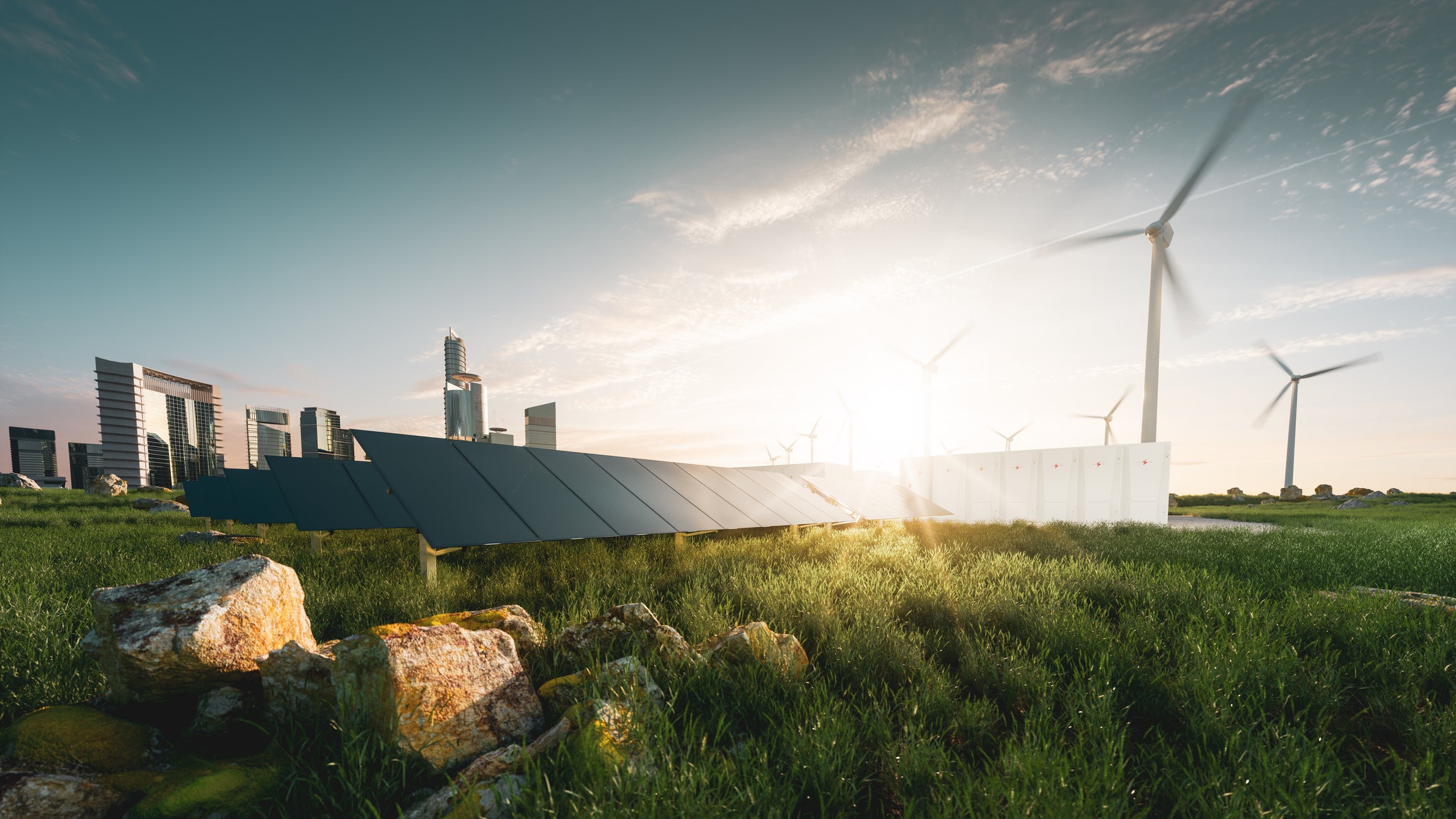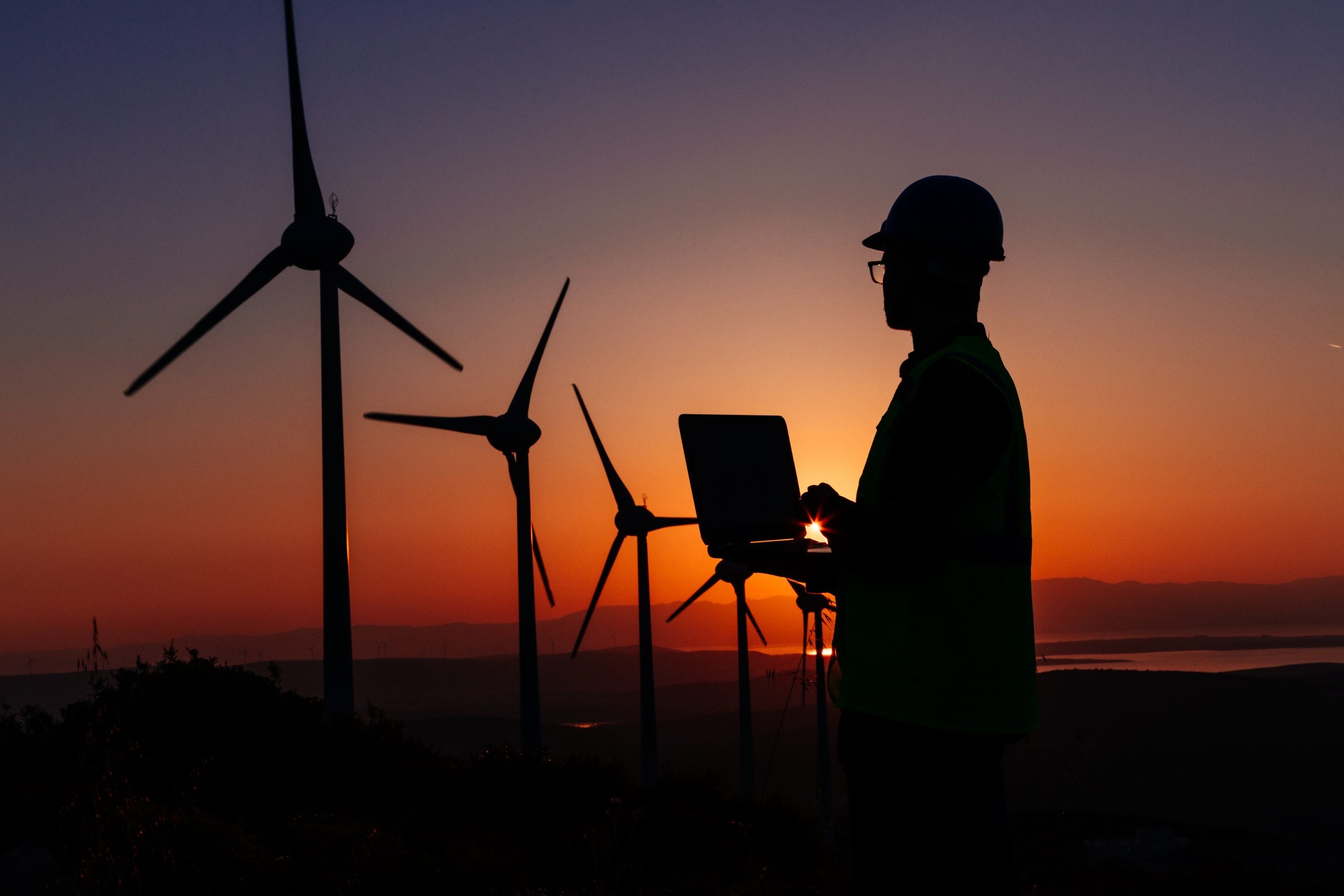
9 recommendations for getting US hydrogen hubs right from the start
This post was co-authored by Akin Olumoroti, Senior Analyst, Federal Climate Innovation
Over the last year, hydrogen has gained significant momentum as a pathway to reduce pollution, create jobs and drive economic growth. Billions of dollars of private sector investment and tax credit support have been announced, and hydrogen build-out is already ramping up.
Earlier this summer, the Department of Energy (DOE) outlined its process for allocating $8 billion of investment for regional clean hydrogen hubs (i.e., close-proximity networks of clean hydrogen producers, consumers and connective infrastructure) from the Infrastructure Investment and Jobs Act (IIJA), and states and companies across the country are actively developing project plans and proposals.
But before we go all-in on deploying hydrogen, it’s essential we understand – and prepare for – its potential risks. EDF has been conducting research around the environmental and climate impacts of hydrogen and has identified several key considerations, including the indirect climate warming potential of hydrogen leakage, the steep energy requirements associated with hydrogen production, and the impacts that hydrogen build-out may have on local communities’ health and environment.
These considerations will be critical to apply as hydrogen hub planning gets underway, so that we not only support hydrogen deployment – but dedicate just as much energy to getting it right.
As hydrogen hub proposals come together, here are nine initial recommendations for federal and state policymakers and hydrogen hub developers to follow:
1. Think ahead about how to reduce hydrogen and methane leakage. EDF’s team of scientists has found that hydrogen emissions (from both leakage and venting) produce significant indirect climate warming. Hydrogen can easily slip through equipment designed to contain larger molecules like methane and can contribute to global warming by interacting with other greenhouse gases in the atmosphere. This warming potential is significant – since hydrogen has 30 times greater warming potential than carbon dioxide (CO2) over the first 20 years of its release.
If we don’t control this issue, it can undermine hydrogen’s proclaimed climate benefits, especially over the next 10-20 years. This is particularly true for blue hydrogen (i.e., hydrogen produced from natural gas with carbon capture), given the added risk of methane leakage and CO2 emissions. For example, under high leakage scenarios, swapping out fossil fuels with blue hydrogen could actually increase warming for a few decades following the switch.
Hydrogen hub developers should make plans now to deal with hydrogen and methane leakage risk. Before moving into Phase 2 of approvals, DOE should require hydrogen hub proposals to include a leakage detection and mitigation plan, including common sense design practices (e.g., eliminating unnecessary equipment; increasing the frequency of inspections and maintenance), budget set-asides for sensor technologies, and research into storage and transport best practices. Not only do these measures minimize climate impacts; they also offer important safety and cost-saving benefits as well.
2. Dedicate funding for sensor technologies. We don’t yet have the tools capable of monitoring hydrogen leakage at the low levels and high frequencies needed. Certain technologies are in the pilot phase, but rapid R&D investment is needed to bring down costs and make these technologies commercially available.
DOE and the national laboratories should extend and broaden its partnerships with private organizations working to solve this problem (as DOE has done with this new funding opportunity). By fast-forwarding its R&D agenda for hydrogen sensors, DOE can ensure these technologies are ready for hydrogen hub deployment within the next 1-2 years. Meanwhile, hub developers should be factoring hydrogen and methane sensors into their operations plans and budgets now.
3. Think holistically about what constitutes “clean hydrogen.” The clean hydrogen standard included in the IIJA and currently guiding DOE’s hydrogen hub development restricts GHG emissions to 2 kilograms (kg) of CO2-equivalent (CO2e) per kg of hydrogen at the point of production. This approach blinds us to some of the main emissions risks. It ignores emissions taking place upstream (in the form of CO2 emissions and methane leakage) and downstream (in the form of hydrogen leakage) – which can more than double the emissions impact of a facility. For example, if you imagine a blue hydrogen plant using typical parameters for CO2 capture and methane leakage, its full emissions impact could be nearly three times the current standard and only 45% lower than today’s fossil fuel (or “grey”) hydrogen plants because of emissions occurring outside the point of production. Moreover, a hydrogen electrolyzer powered by the average U.S. electricity grid mix would emit as much as 20 kg CO2e – nearly twice as much today’s grey hydrogen plants – but be considered “clean” under DOE’s current standard. Clearly, the whole emissions story matters.
DOE should supplement the IIJA clean hydrogen standard and establish a more ambitious expectation for hydrogen hubs that accounts for full lifecycle greenhouse gas emissions (e.g., in line with EU standards of 70-80% reductions from grey H2 levels on a full lifecycle basis). And when conducting lifecycle assessments for their projects, hub developers should plan to do this holistically – including both direct and indirect GHG emissions at all stages of the lifecycle and considering both near- and long-term time horizons (i.e., GWP20 and 100).
4. Prioritize hydrogen for difficult applications, where today’s solutions are insufficient. Hydrogen production is an energy-intensive process because a substantial amount of energy is required to extract it from water or other molecules and then to convert it to electricity or a liquid fuel. For example, using hydrogen to heat a home or power a passenger car can require 2-14 times more energy than direct electrification alternatives like electric heat pumps and EVs. This means for many uses, such as passenger vehicles or residential buildings, it will be cheaper and more efficient to use electricity directly rather than converting energy to and from hydrogen.
Given these energy efficiency considerations – and the added risk of hydrogen leakage – DOE and project developers should target hydrogen use to the most challenging, hard-to-abate applications, like industrial processes (e.g., for cement, fertilizer, and steel), aviation, shipping and long-haul trucking. (See, for example, Michael Liebreich’s Clean Hydrogen Ladder.)
In addition to a lifecycle analysis of GHG emissions, developers should be required to note the anticipated end use and submit a rigorous comparison of hydrogen and the alternative decarbonization solutions for such end use.
It is also important to remember that many hard-to-abate applications (like green ammonia for shipping or liquid hydrogen for aviation) are further behind in their development and may not yet be competitive in the first launch. DOE should strongly consider reserving funds for a second launch of hub applications, both to support newer, up-and-coming applications and to encourage participation from less well-resourced groups who may operate on longer planning or consultation timelines.
5. Don’t slow progress in building a clean power sector. Hydrogen has the potential to support some elements of grid electrification – for example, by assisting with load balancing or seasonal storage. However, given its relative energy intensity, it also has the potential to divert much-needed renewable resources from doing their regular direct electrification jobs. For example, BCG has estimated that replacing the grey hydrogen currently used by industry with green hydrogen (i.e., hydrogen produced using renewable electricity) would require 3,500 TWh of renewable energy – which is more than the amount of non-hydro renewables currently generated worldwide.
In addition to limiting hydrogen use to hard-to-abate applications (see #4), green hydrogen producers should prioritize the use of excess renewables (that would otherwise be curtailed) and/or make commitments to build out additional renewable capacity (beyond what is planned to meet other regulatory targets). When assessing hydrogen hub proposals, DOE should take into account potential impacts to the electricity grid and prioritize proposals that support broader grid decarbonization.
6. Conduct research into environmental, health and social consequences, and set necessary protections. Hydrogen build-out can have significant impacts on local communities – particularly low-income communities and communities of color. For instance, blue hydrogen production risks extending the lifetime of fossil fuel facilities (which are disproportionately sited in communities of color) and prolonging local air quality concerns, while hydrogen applications that involve combustion can create toxic nitrogen oxide (NOx) emissions. Hydrogen electrolyzers and fuel cells also require critical minerals like nickel, platinum and copper – and extracting these materials is often a dirty and exploitive process that can cause harm to indigenous communities of color and other fenceline communities living near mineral deposits. Moreover, green hydrogen production is water-intensive, which can create challenges for areas already facing water scarcity and drought risk.
Government, industry and academia should all commit to furthering our understanding of these risks and the solutions needed by local communities. DOE and EPA in particular should conduct research and issue guidance for hydrogen hub development, including environmental performance standards, NOx emission controls, responsible sourcing techniques for critical minerals, circular economy approaches for waste recovery, disposal practices to minimize water pollution, etc. Regulators should also address this set of issues on a case-by-case basis by requiring cumulative impact analyses (including environmental impact statements) for all new hydrogen projects.
7. Support the community. Hydrogen hubs have the potential to offer jobs and economic development benefits for communities. However, protections must exist to ensure that these local opportunities are sustainable, forward-looking, environmentally sound and equitably distributed.
DOE should establish a joint hydrogen workforce development program with the Department of Labor and other federal agencies that would engage with trade associations, labor groups, companies, local vocational and higher education facilities, and community-based organizations to establish relevant training and education programs.
Project developers should ensure (and DOE should require) that their proposals include strong labor standards, including providing prevailing wages, project labor agreements, union neutrality, occupational health and safety standards, and avoiding excess use of contracted or temporary employees. Proposals should also include plans to support local economic development, such as strong job training programs, community benefit agreements, and contracting preferences for small and minority-owned businesses.
8. Follow through on community engagement commitments. Hydrogen hub development strategies should be co-created with affected communities in each region under consideration, and the selection and implementation should be guided by the communities themselves. DOE should follow up on its stated commitment by establishing meaningful engagement requirements to ensure that the public has reasonable notice of relevant information and the opportunity to participate early and throughout the entire process. For each hydrogen hub that receives Phase 1 funding, DOE should require a decision-making committee be established, with membership including community representatives from each region, to guide investments based on lived experience and localized expertise.
DOE’s Notice of Intent has also indicated a commitment to tracking and reporting outcomes related to community engagement, as well as environmental justice, consent-based citing, labor, DEI, workforce development and air quality. This represents an important opportunity to establish metrics and targets, as well as processes for tracking outcomes over time and making recommendations for improvement.
9. Be transparent. The hydrogen economy is still in its infancy, and hydrogen hubs are intended to be opportunities to test concepts, demonstrate viability and understand the real impacts felt by communities. The more that these insights and best practices are shared across the industry, the more quickly, efficiently and sustainably the industry can mature – and the more we can ensure that communities actually benefit from these investments.
Given the level of public support being provided, DOE has an opportunity to promote valuable information-sharing among hydrogen hub developers, affected communities and the broader research community. For example, concept papers submitted to DOE for hydrogen hub selection should be made public so that stakeholders are able to provide informed comments and track relevant outcomes over time. DOE, EPA and others should also ensure that collected data on hydrogen and methane emissions, GHG intensities, air quality, and other metrics are accessible to researchers and other stakeholders.
By following these nine initial recommendations, policymakers and developers can begin to lay the groundwork for hydrogen hubs that support our communities, economy and climate goals.
But this is just the beginning. As more research gets published and project plans come together, EDF will be monitoring developments closely and sharing more recommendations and insights to help ensure hydrogen fully delivers as a climate solution.












